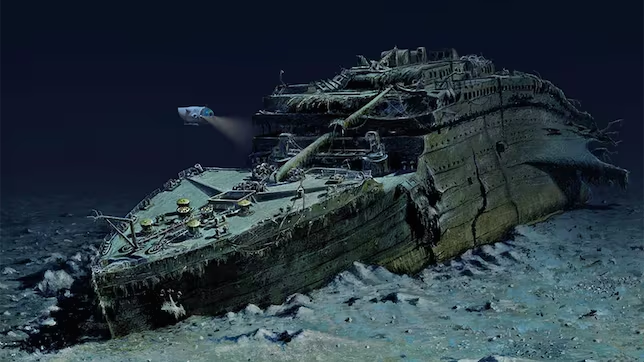
Surprising Reasons For The Absence Of Skeletons On The Titanic
The sinking of the Titanic is a striking chapter in history, and the absence of human remains at the wreck site raises significant questions that still intrigue experts and the public today.
The mystery of why there are no skeletons at the Titanic’s final resting place has puzzled many. In contrast to other shipwrecks, where remains are often found, the absence of bodies from the Titanic prompts fascinating inquiries. When the Titanic sank in 1912 after hitting an iceberg, around 1,517 lives were lost.
One critical factor is the wreck’s depth. Experts believe that the Titanic lies about 3,800 meters beneath the ocean’s surface, which significantly impacts the lack of skeletal remains.
Deep-sea explorer Robert Ballard provides insight into this phenomenon, noting that the seawater at such depths can dissolve bones because it is undersaturated in calcium carbonate, a primary component of bones. Essentially, the water absorbs the bones, redistributing calcium to the calcium-deficient ocean.
This revelation has caught many by surprise, leading some to express their astonishment on platforms like Reddit. While the unique conditions at these depths have resulted in the absence of skeletons, certain artifacts, such as shoes, remain, indicating that human remains once existed but have since decayed. However, this doesn’t completely eliminate the possibility of any skeletal remains being present on the ocean floor.
Legal and Ethical Considerations
Proposed expeditions to recover specific artifacts from the Titanic, such as its famous radio equipment, have ignited legal debates. Concerns about disturbing potential human remains and the sanctity of the site as a memorial have fueled discussions and court disputes. Is this site merely a memorial, or does it serve as a mass grave? Should museums and historians have the right to items located nearly 4 kilometers underwater?
The challenge lies in balancing scientific exploration with the need to honor the memory of those who lost their lives. Some advocate for further investigation to possibly locate human remains and provide closure for families, while others argue that the site should remain undisturbed out of respect for the deceased.
Technological hurdles also complicate explorations of the Titanic’s depths. Deep-sea expeditions present significant challenges, from navigating the extreme depths to contending with harsh conditions that may impede any discoveries. Retrieving items from such depths is as challenging as determining the ethical implications of doing so.
WATCH THE VIDEO BELOW:
The Titanic’s Lingering Mysteries
Despite numerous theories and speculations, the absence of skeletons on the Titanic remains largely unexplained. Some suggest that a violent storm during the sinking may have dispersed passengers far from the wreckage, while others believe that remains might still be hidden within the ship itself.
While the calcium-deficient waters may explain some of the disappearances, they do not account for everything. The quest to uncover the truth is complicated by ethical concerns and the desire to maintain the sanctity of the wreck site.
As discussions continue, the tragedy of the Titanic serves as a poignant reminder of the human cost associated with the disaster. Whether the mystery of the missing bodies is ever resolved, the Titanic’s legacy will endure as a tribute to those who perished on that fateful voyage.